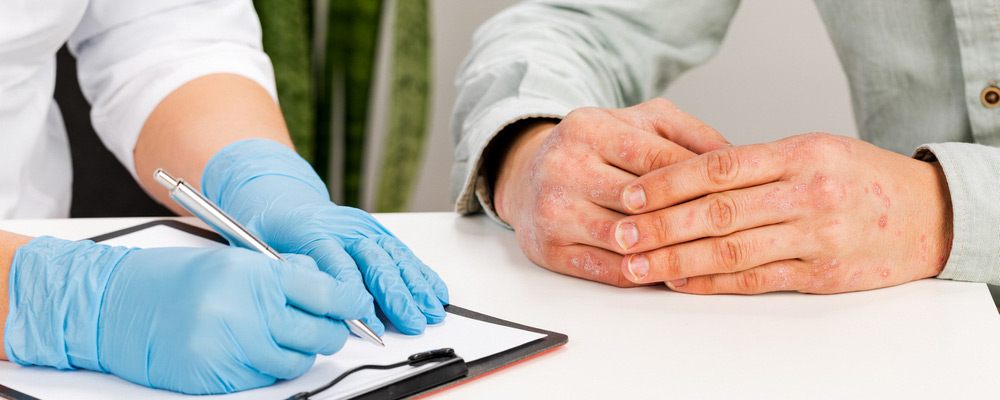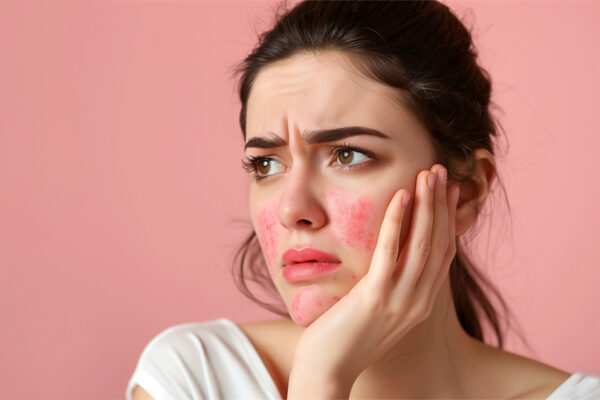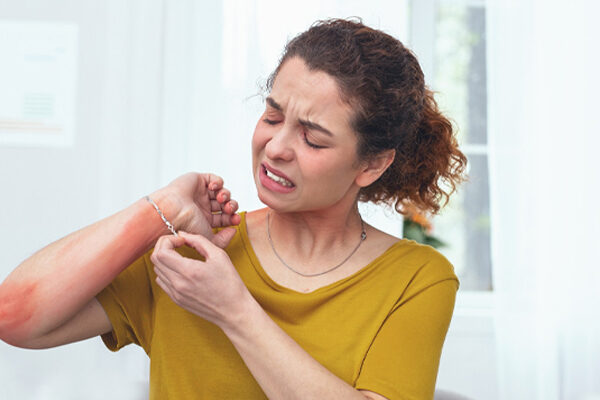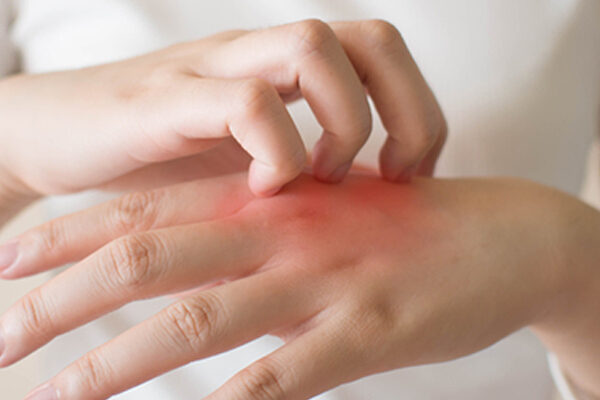Updated on January 24, 2023
Introduction
Ever had red, circular patches on your arms, hands, or legs? And do they itch as well? This could be a flare-up of nummular eczema (NE), a type of chronic eczema characterized by round or oval patches of skin.
The coin-shaped lesions are frequently itchy, ooze clear fluid, and may crust over. As the lesions age, they may become scaly and resemble fungus (ringworm) or psoriasis. Although the condition typically responds well to treatment, episodes can still occur even after treatment to reduce the symptoms. Numerous skincare strategies can stop and lessen these flare-ups.
Continue reading this article to learn more about it, its resemblance with ringworm and psoriasis, the nummular eczema healing process, and the treatment options available.
Also read: More than Just an Itch: Guide to Living with Papular Eczema
What is Nummular Eczema?
It may begin as small bumps or blisters and progress to one or more patches of small coin-shaped lesions that can last for several months. It frequently affects the legs, hands, arms, and torso. Less commonly it includes the face.
Tiny blister-like sores are the first sign of this skin disease. The coin-shaped spots that appear after may vary depending on one’s skin tone. They may be red or pink on fairer skin tones or they may appear darker on darker skin tones. The spots of this skin disease are usually elevated and frequently scaly. Sometimes, they may resemble a ringworm infection. Nummular eczema vs Ringworm — there’s a vast difference between these 2 conditions.
The Distinction: Nummular Eczema vs Ringworm
Ringworm and nummular eczema are both skin conditions that cause redness, itchiness, and other symptoms. These conditions are sometimes confusing because they both cause circular rashes on the skin. However, their causes and treatments vary.
Nummular eczema vs ringworm: Ringworm is a fungus-caused skin infection. It is a type of skin condition, not a fungal infection. Ringworm does not cause as many symptoms as nummular eczema. The condition is most noticeable as red rings along the skin. Ringworm typically manifests as a single spot, whereas nummular eczema frequently manifests as multiple patches.
For either condition, you’ll need to see a dermatologist.
The Distinction: Nummular Eczema vs Psoriasis
It can be difficult to distinguish between eczema and psoriasis. Psoriasis causes thick scales on the skin, while nummular-eczema causes bump that ooze and crust over. Eczema is itchier than psoriasis.
Although neither condition is contagious, they can both cause infections. The underlying causes are the most significant distinction — nummular eczema vs psoriasis. Psoriasis is an autoimmune disease, whereas eczema has a much more complicated and difficult-to-determine cause. The rash may be caused by both genetic and environmental factors.
Nummular eczema vs psoriasis can manifest differently in each individual. Comparing your symptoms to those of another person with the same condition, will not always provide you with the correct answer. Consult a dermatologist to get the proper diagnosis and treatment.
Causes of Nummular Eczema?
People with nummular eczema frequently have a family history of dermatitis and allergies, such as hay fever or asthma. However, specific triggers can either cause or worsen the condition. These include:
- Allergies: These can develop in people who are allergic or hypersensitive to metals such as nickel, chromate, or cobalt. Mercury in old fillings can also cause the immune system to malfunction, resulting in eczema.
- Stress: Because of its impact on immune response, stress is a significant contributor. Anxiety and stress caused by nummular eczema can exacerbate this.
- Alcohol consumption: Although rare, some people report that alcohol aggravates their eczema symptoms.
- Medications: Some medications, such as diuretics, interferon, ribavirin, monoclonal antibodies, antivirals, statins, isotretinoin, and retinoids, cause dry skin, which increases the risk of nummular-eczema.
- Environmental irritants: These include harsh household cleaners, chemicals, and soaps.
- Temperature Changes: Lower humidity in the winter and higher temperatures in the summer may aggravate the nummular disease.
- Injuries: Frequent cuts and abrasions to the skin, whether from a bug bite or a contact injury, are likely to cause eczema flare-ups.
- Skin sensitivities: People who are sensitive to heavily fragranced skin care products, rough wool, or tight nonbreathable fabric may experience a flare-up if they come into contact with them.
What are the Symptoms of Nummular Eczema?
The symptoms are frequently associated with a skin injury, such as a chemical burn, abrasion, or insect bite, but there are other causes. The following are the symptoms of nummular eczema:
- Lesions in the shape of a coin
- Itching
- Burning
- Blistering
- Skin that is dry and scaly around lesions
- Skin discoloration that is red, pinkish, or brown
- On top of old lesions, there are new, raised flare-ups
How to Treat Nummular Eczema?
Although this skin disease is typically a chronic condition, there are medications that can help with symptom relief and management. Treatments consist of:
- Topical corticosteroids (steroid-containing ointments and creams) are applied to the skin to treat severe symptoms
- Emollients are moisturizers used to prevent dry skin
- Antihistamines are drugs that lessen itching
Additionally, there are things you can do on your own that may help lessen flare-ups, such as avoiding the irritants found in soaps, detergents, bubble baths, and shower gels. If your eczema is infected or particularly bad, additional medication may be prescribed.
On rare occasions, It is an affected skin patch may remain permanently discolored after the condition has resolved.
Summary
Nummular eczema is a chronic skin condition that results in cracked, swollen, and itchy skin in the form of circular or oval patches. The coin-shaped lesions frequently ooze clear fluid and can even start to crust over.
Although the condition typically improves with treatment, it can still persist for weeks, months, or even years without it. Additionally, it might recur, frequently in the same region that was previously impacted.





